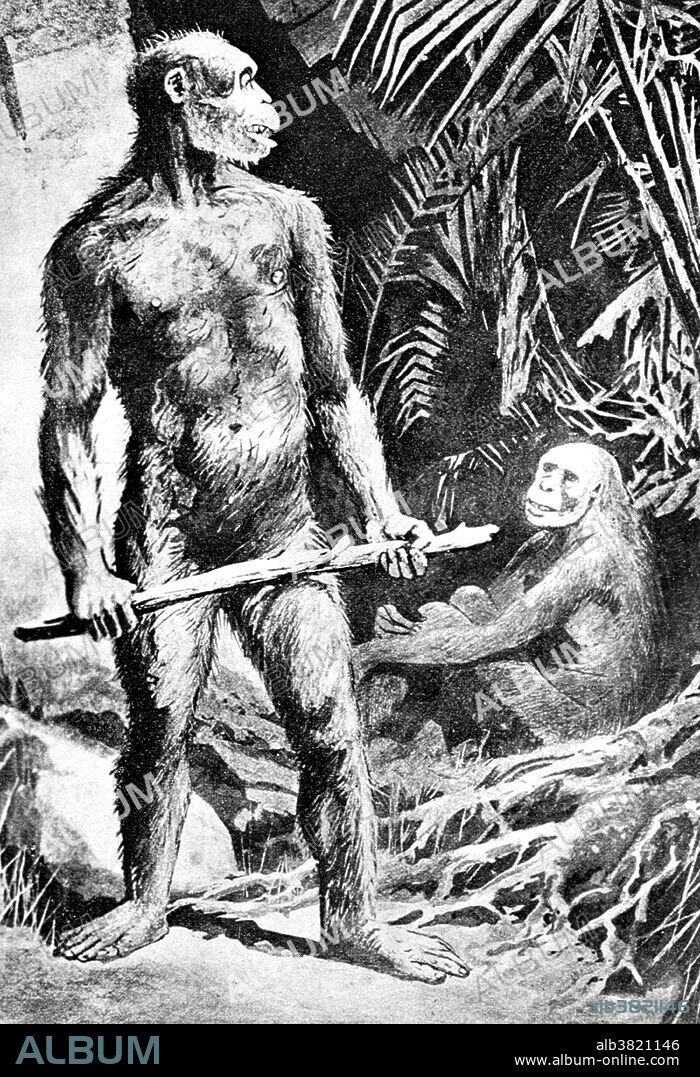alb3821146
Prehistoric Java Man, Homo erectus

|
Añadir a otro lightbox |
|
Añadir a otro lightbox |



¿Ya tienes cuenta? Iniciar sesión
¿No tienes cuenta? Regístrate
Compra esta imagen.
Selecciona el uso:

Título:
Prehistoric Java Man, Homo erectus
Descripción:
Ver traducción automática
The Java Man was an apelike form of Homo sapiens from the middle Pleistocene having a small brain capacity, low cranial vault, and massive brow ridges. Java Man is the common name of fossilized Homo erectus remains found in 1891 at Trinil, Java. Its discoverer, Eugène Dubois, gave it the scientific name Pithecanthropus erectus, a name derived from Greek and Latin roots meaning upright ape-man. The current consensus of anthropologists is that the direct ancestors of modern humans were African populations of Homo erectus (possibly Homo ergaster), rather than the Asian populations exemplified by Java Man and Peking Man. Illustration originally captioned: Pithecanthropus, Java Ape Man (Osborn) from unidentified source, 1916.
Crédito:
Album / USGS/Science Source
Autorizaciones:
Modelo: No - Propiedad: No
¿Preguntas relacionadas con los derechos?
¿Preguntas relacionadas con los derechos?
Tamaño imagen:
3600 x 5263 px | 54.2 MB
Tamaño impresión:
30.5 x 44.6 cm | 12.0 x 17.5 in (300 dpi)
Palabras clave:
1916 • ANTROPOLOGIA • ARTE • BLANCO Y NEGRO • DIBUJO • EVOLUCION HUMANA • EVOLUCION • EVOLUCIONISTA • EXTINGUIDO • HOMBRE PRIMITIVO • HOMO ERECTUS • ILUSTRACION • JAVA MAN • OBRA DE ARTE • PALEONTOLOGIA • PITECANTROPO ERECTO • PLEISTOCENO MEDIO • PLEISTOCENO • PREHISTORIA • PREHISTORICO • S. XX • SIGLO XX
 Pinterest
Pinterest Twitter
Twitter Facebook
Facebook Copiar enlace
Copiar enlace Email
Email
